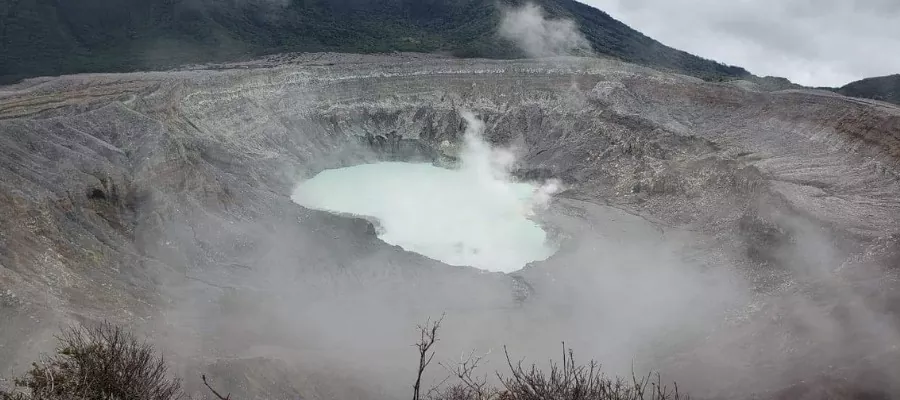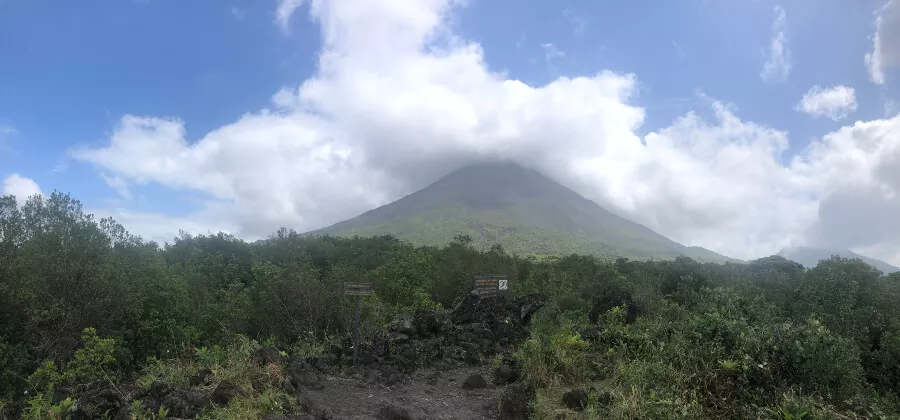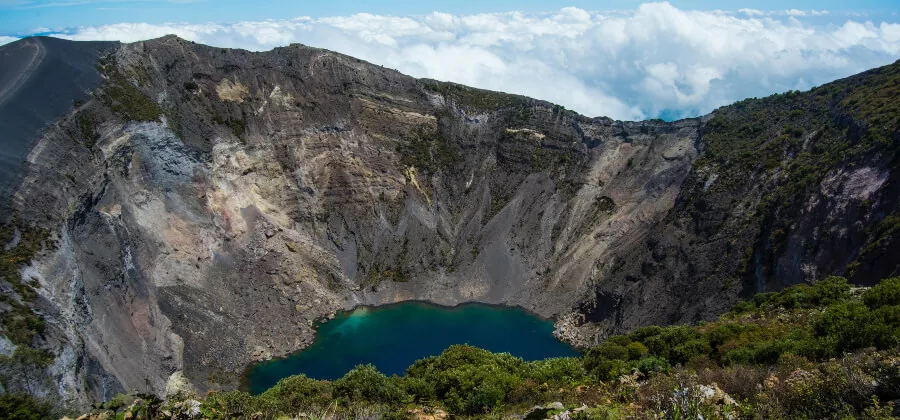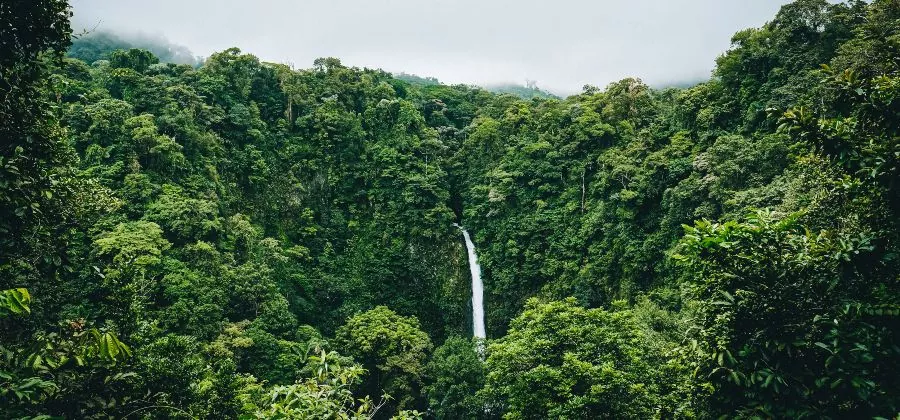Costa Rica was born from volcanism. Without volcanoes, Costa Rica would not be Costa Rica. From volcanoes come fertile soils, rocks for construction, water from aquifers, geothermal energy and thermal waters. Here is the list of volcanoes that must be included for your trip to Costa Rica. Leave with your rental car to discover these giants.
The Poas volcano

Near the city of Alajuela, 20 kilometers west of San Jose, stands this active volcano whose last eruption was documented in 1953.
At 2,700 meters high, the volcano has three distinct craters. The main crater opens onto a lunar-like plain that remains devoid of vegetation due to the constant emissions of sulfur that it produces. With a diameter of 1.5 kilometers, it is considered one of the largest volcanoes in Costa Rica and is occupied by a lagoon of acidic and boiling water with fluorescent blue and green colors. There are several trails that allow you to enter the "páramo" (highland rainforest) and appreciate the craters, fauna and flora up close.
To get there, a bus leaves every day from San José at 8 am and arrives at the entrance of the national park in 2.5 hours, after a stop in Alajuela. Otherwise, by car, from San José, it will take you about 1 hour.
The Arenal volcano

Since 1968, after more than 500 years of inactivity, the Arenal volcano began to expel lava and ashes to the great surprise of the « ticos ». It is considered one of the most active volcanoes in Costa Rica. Kids usually love it !
This majestic 1,600 meter high volcano is located in the Arenal Volcano National Park, in the northwest of the country. It is surrounded by a tropical forest of more than 12 000 hectares.
This cone-shaped volcano overlooks the town of La Fortuna de San Carlos, located 3 hours drive from the capital; San Jose, only 10 kilometers from the Arenal volcano.
The area is also famous for its hot springs. You can visit the river called Tabacón and bathe in its thermal waters, sipping a mojito with the view of the volcano.
The Irazu volcano

With the highest altitude of all the volcanoes in Costa Rica, Irazú commands respect by its name alone. The indigenous word Iztarú, from which Irazú is derived, means “earthquake mountain”.
The Irazú is currently inactive and it is possible to visit it by following the trails of the national park of the same name.
Although the vegetation is scarce due to the altitude (3,432 meters), it is worth visiting this park, as the volcano hides some nice surprises. During the hike, you are likely to see wildlife. One of them is the bright green lagoon that occupies one of the four craters. The other is the breathtaking view from the top of the volcano. If you are lucky and the weather is clear, it is possible to see the Pacific and Atlantic Oceans on either side. But for this, you have to get up early, because very soon the clouds arrive and hide the view.
The national park is located about 32 kilometers northeast of Cartago, the former capital of the country, partially destroyed by the eruption of the Irazú volcano. From San José, it is a one and a half hour drive through picturesque landscapes.
The Turrialba volcano

The Turrialba volcano does not enjoy great popularity among tourists visiting Costa Rica. In part, because it is in competition with its big brother Irazu, with which it shares the base. On the other hand, for its intense volcanic activity, which has led to prohibit access to it on several occasions. The volcano recorded one of its largest eruptions in September 2016, spewing clouds of gas and ash that reached 3,000 meters high.
While it does not show this destructive side, Turrialba Volcano National Park is a fascinating place of unspoiled nature and incredible views of the Caribbean coast. When you can visit, it is possible to reach the 3 craters by trails.
From the city, you can also visit the pre-Columbian ruins of Guayabo, located on the southern side of the volcano. This archaeological site was the main indigenous settlement in the country, which is why it is classified as a national monument.
The Rincon de la Vieja volcano

In the province of Guanacaste, 25 kilometers northeast of Liberia, you will find this volcano surrounded by mysticism and legends.
It is said that a native princess fell in love with an enemy warrior. The princess' father, opposed to this relationship, threw the young man into the crater. In order to be close to him, the princess withdrew to live next to the volcano and learned to heal herself with the plants of the place, a work that she continued also in her old age. For this reason, the inhabitants of the region began to call the volcano the Rincón de la Vieja (old woman's corner).
If you are curious, don't miss the opportunity to get to know this national park, whose setting is as charming as its history. Although it is one of the most spectacular protected areas in Costa Rica, it is not as visited as other volcanoes, perhaps because it is not close to a tourist route.
Its main attraction is the mixture of waterfalls, fumaroles, geysers and hot springs that can be found there. In the area southeast of the volcano, you will discover everything. There are 2 trails in this area, 3 and 5 kilometers long. The longest, linear, takes you to the waterfall of Cangreja. In the faster one, you can make a circular walk through the pailas, small lagoons of boiling mud.
To travel from one volcano to another, we recommend you rent a 4 wheel drive or an SUV as road are often in bad conditions.